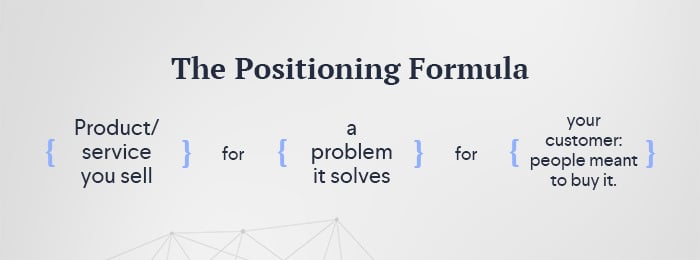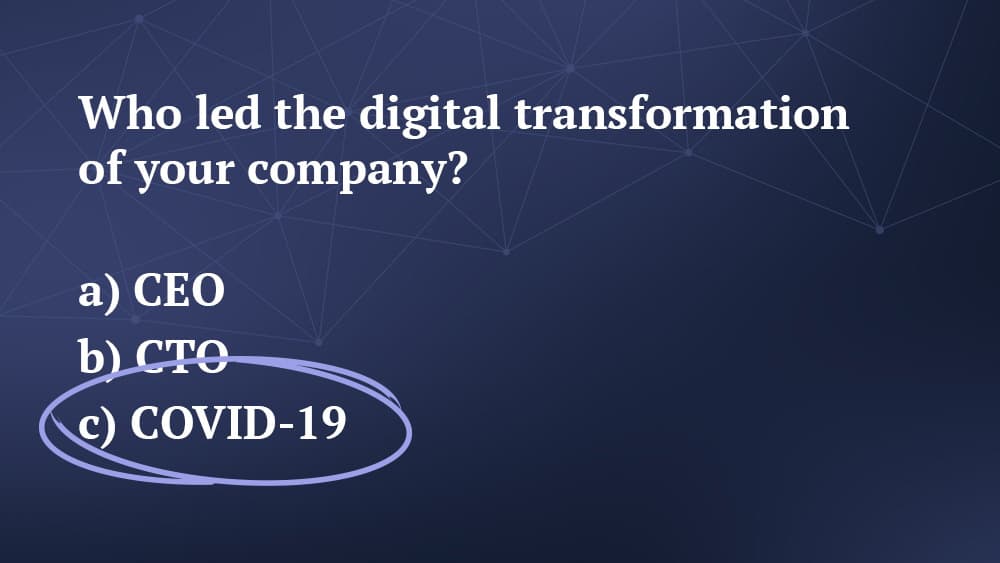Standing in my home office over a month in, I felt paralyzed and helpless. In an act of desperation, I had packed up every possible thing from our offices that I thought I would need to carry us through this remote period. It was as if we had been voted off our own island and now the instinct was to gather as much as possible before heading into the lifeboat.
I realized that I couldn’t see the floor or the top of my desk. These items had not served the business in the last month, is it possible that they wouldn’t serve in the future?
The hunter-gatherer DNA is strong still in our culture, and in some ways, more so in an entrepreneurial or entrepreneurial family business. The fear of scarcity drives us to create more business, more scale and sometimes what comes with it — more burdens.
In the name of, or perception of, growth, we have led our businesses into unprofitable ventures, focused on unremarkable training programs, inflated staffing levels, and covered over long-standing performance issues in our business structures. Times were good, but now the emperor has no clothes.
If you are one of the business leaders now attempting to show fearlessness in the face of uncertainty, there is a chance you feel as if you are impersonating Washington crossing the Delaware River.
Leaders are floating in a life raft looking back at one of three scenarios: the slow-sinking Titanic, the fiery pirate ship, or the shrinking horizon line.

The Slow-Sinking Titanic
These organizations enjoyed unprecedented growth in the last 10 years. Growth leads to extra finery. Maybe some of your leadership or management doesn’t remember the last recession or didn’t even experience it. There is a confidence that comes with the success of “Titanic” organizations, whispers of “too big to fail.”
Unfortunately, for these organizations, the current economic challenges may hit hardest. These organizations are large and complex. While they may have more access to funding or the markets than their smaller market competitors, they can’t make the same sweeping changes within ingrained organizational structures and practices.
Over time this organization has burdened itself with more obligations that may not be related to the company’s core profitable business.
Success for these organizations requires swift changes to alter course to miss the iceberg ahead.

The Fiery Pirate Ship
This organization finds itself sinking in the battle waters around it. Hardest hit, these businesses have felt the brunt of this economic battle. Metaphorically, the ship is on fire, and it will never be the same.
This business may be less established. It may have fewer processes, less access to funding, little savings. If this is an established first or early second-generation firm, systemic issues have long been ignored.
These organizations are in or beginning to move on from the grieving process. They have the benefit of being on the battleground. They have seen the enemy, they know what some cannot admit to themselves yet — things will not be exactly the same in the future.
Success for these businesses is realizing it's time to be reborn as a new business or drastically adapt the current one to the new market.

The Shrinking Horizon
While no economist or advisor saw this economic condition with enough foresight to escape unharmed, there are businesses that have dodged the frontline battleground and the slow sinking that will be experienced by other organizations.
These businesses may have been deemed essential during the COVID-19 pandemic or have strong core digital businesses keeping their revenue positive. Regardless of their size or condition, leaders of these organizations find themselves floating away from the safety of their previous profitable condition, watching that horizon line shrink in the distance.
This is both the most vulnerable group and the strongest group of businesses poised for transformation. Leaders know that they were lucky to escape the worst with their crew intact. However, they know supplies are limited and the next destination is not clear through the fog ahead.
Success for these organizations is dependent on their agility to react faster than their larger competitors to the new market that emerges while addressing efficiency issues internally. Timing will be everything for this group.

“Look to evaluate your entire organizational structure. Consider bravely recasting talent and resources to prepare for the more fully digitally enabled economy.”
Three Excesses Your Business Can Do Without
Regardless of your business’s current position, one thing all have in common is the inability to reverse what has already happened. Moving forward all organizations in these scenarios must strip themselves of all that doesn’t serve all stakeholders — customers, employees, partners, their industry and communities.
Here are three changes your organization can make immediately to clarify its messaging, mission, and communication strategies to get back to business and away from bloat.
Remove BS From Your Culture
Hollow words mean nothing. There is a 100% chance that when leadership authored your company culture, it was during what now feels like another world. Your culture needs to adapt to the current environment.
If establishing a culture was a bucket-list buzzword for goal for 2020, it’s now a necessity. Establishing and grooming a culture within your organization is not a simple feat in the best of times, let alone when your team is not working, furloughed, or newly remote.
If you have an existing culture code, mission or vision document, circulate this among your management staff. What is your culture? When you read those statements do they still ring true or do they fall flat? I recommend you print your mission, vision and culture statements and post them somewhere visible in your new home office where you can evaluate them daily.
Ask:
- Do these statements reflect our company currently?
- Do these statements reflect our customers currently?
- Do any words in these statements feel false or untrue?
- Have our customers used these statements to describe us in the past? Now?
- Have employees used these words and phrases in their description of the company in the past? Now?
Check in with your management team monthly and adjust these statements as needed. Be fearless and cut words that have superficial meaning and no longer serve your purpose as an organization.
A crisis can sometimes provide much-needed clarity.
Simplify Positioning With Index Card Marketing
Too many businesses make it difficult for companies to purchase from them. They use fancy words and complicated language to communicate their offering.
Strip away all the extra layers from your company’s offering and messaging.
Ask:
- What do you sell?
- How easy is it to explain?
- How easy is it to buy?
What do you sell? Whether it’s a product or a service, this should be simple to answer. A quick test to see if you have a positioning problem is to ask this open-ended question of your own team. You may be surprised by how many variations on the answer you receive.
Take this exercise one step further, and ask the team to explain who your company serves. If you get varied answers, you have a positioning problem.
Positioning alignment begins internally. A simple sentence should be able to easily explain what your company does, who it serves, and how your company solves a problem for the customer.

For Illumine8 that positioning statement is:
Marketing strategy and execution for sustainable business growth for generational family-based business leaders.
Through this lens, evaluate your company’s messaging and offers. If anything uncovered in this audit doesn’t serve the positioning statement, it should be stripped. This is excess baggage that doesn’t serve your organization — it’s like an anchor dragging behind you.
Digitize Your Company Offering
Digital transformation was always on the mind of your leadership team. Now the need to move your offering onto a digital platform is no longer a nice to have, it's a need to have. And your company needed to move yesterday.
There is a popular meme that illustrates this urgency. When asked what is driving their digital strategy, this short questionnaire gives three choices “CEO,” “CTO” or “COVID-19.”

The toll of this crisis is unlike anything this generation has seen and can be compared to wartime struggles. We are living through a page-turn into a new chapter, much of which is unknown, uncharted waters.
Despite all of this, most agree, the transformation ahead will be a catalyst for fully integrating digital into our operations. But this revelation didn’t creep up unexpectedly. It’s the thing that has been keeping many leaders awake at night. Even before COVID-19, 92% of companies thought their business models would need to change because of digitization.
The question to review in your company isn’t if digital transformation is an option, it’s how to implement the technology to deliver your solution to customers. For product-based companies, this may be as simple as an eCommerce solution. For event-based and service-based businesses, the experience may be more complex.
Ask:
- What is the goal of digitizing our business?
- Will this transformation create an additional advantage or income stream in the future when social restrictions are lifted or eased?
- Does digitizing our business serve the same service/product? Does our digital customer look the same as our traditional customer? Does this open the door to new markets or customers?
- Does the business have a clear plan for digitization and how we will get there?
- What talent considerations should we focus on now and in the future? Is this in-house talent or outsourced experts?
- What technology considerations should be the focus beyond the digital storefront? How will this change our company’s internal operations?
Looking to the future, consumer habits will be impacted both in the short and long term. This may mean physical locations may no longer serve your organization. Customer communications may move away from in-person to digital experiences. Whatever touch-points existed previously will be recast in the future and technology will most definitely play an essential part in our daily interactions.
Look to evaluate your entire organizational structure. Consider bravely recasting talent and resources to prepare for the more fully digitally enabled economy.
Research shows us that gains during recessions and downturns favor the early movers. In the recession of 2007-08, the top 25% of companies accelerated ahead of their peers by about 20 percentage points as they moved into the recovery in terms of cumulative total returns to shareholders (TRS).
These gains were not lost. Eight years later, the 20% lead grew to more than 150 percentage points.
The lesson from these early movers is that companies that strategically move early and firmly will perform the best in recovery and beyond. As a leader assessing your position as a large titanic corporation, in the midst of the sinking ship on the battleground, or leading your team away from familiar shrinking horizons, consider that the time to make your move is now.
Most SMBs fall into the shrinking horizon category. Survival requires packing essentials to take with you and your team to the next destination. Strip away the excess and get back to your business’s core authentic mission in calmer waters.

